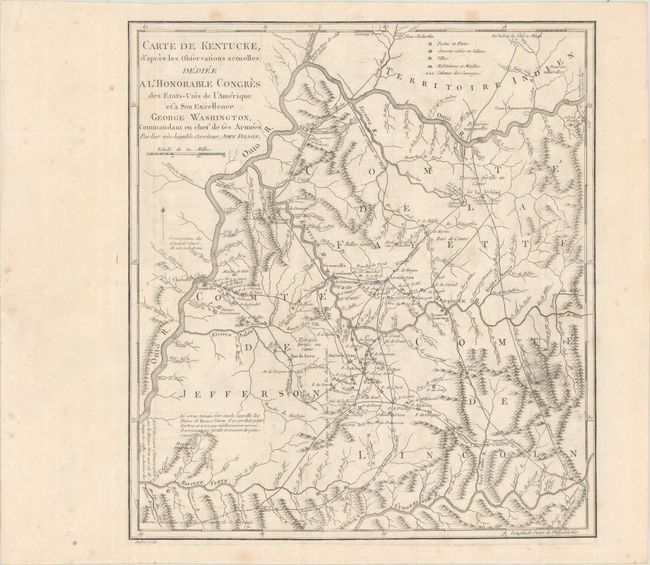Subject: Kentucky
Period: 1784 (published)
Publication:
Color: Black & White
Size:
12.4 x 13.7 inches
31.5 x 34.8 cm
Filson's landmark and very rare map of Kentucky extends from the Ohio River in the north to the Cumberland River in the south. The map contains numerous notes on the topography and nature of the land and features a legend identifying forts, villages, mills, and even the "huts of savages" (Indian settlements). John Filson (1753 - 1788) was the first Historian of Kentucky. Moving from Pennsylvania about 1782, he settled in Lexington where he divided his time between teaching and surveying land claims. He wrote The Discovery, Settlement and Present State of Kentucke in 1784. The "Map of Kentucke" was engraved and printed in Philadelphia and was reprinted several times prior to 1793, but his plan for a second edition was not realized. He purchased land at the junction of the Ohio and Licking rivers, the future site of Cincinnati, which he named Losantiville. His survey and plan of the town is visible in the structure of today's downtown Cincinnati. In 1788 while on a surveying expedition near the Great Miami River, he disappeared when the party was attacked by Shawnee Indians.
The map is accompanied by two volumes of text related to American life after the Revolution including Crevecoeur’s Lettres d'un Cultivateur Americain (1784 edition, 2 volumes: 422 pp. and 400 pp., no maps) and the French edition of Filson’s Histoire de Kentucke, Nouvelle Colonie a l'Ouest de la Virginie at the end of the second volume (1785 edition, 234 pp.). The latter book contains a vast array of information on Kentucky, including the discovery, the acquisition, the establishment, and a description of the topography and nature. Also included is some history on Colonel Daniel Boon (helping his notoriety) and the Native Indians in the region. 12mo, hardbound in red marbled boards with ribbon page marks.
References: Howes #F129 & #C883.
Condition: A
The map, issued folding, is very good with faint offsetting and a few minor spots in the image. The text volumes are internally very clean and bright with some rubbing and abrasions to covers and spines.





